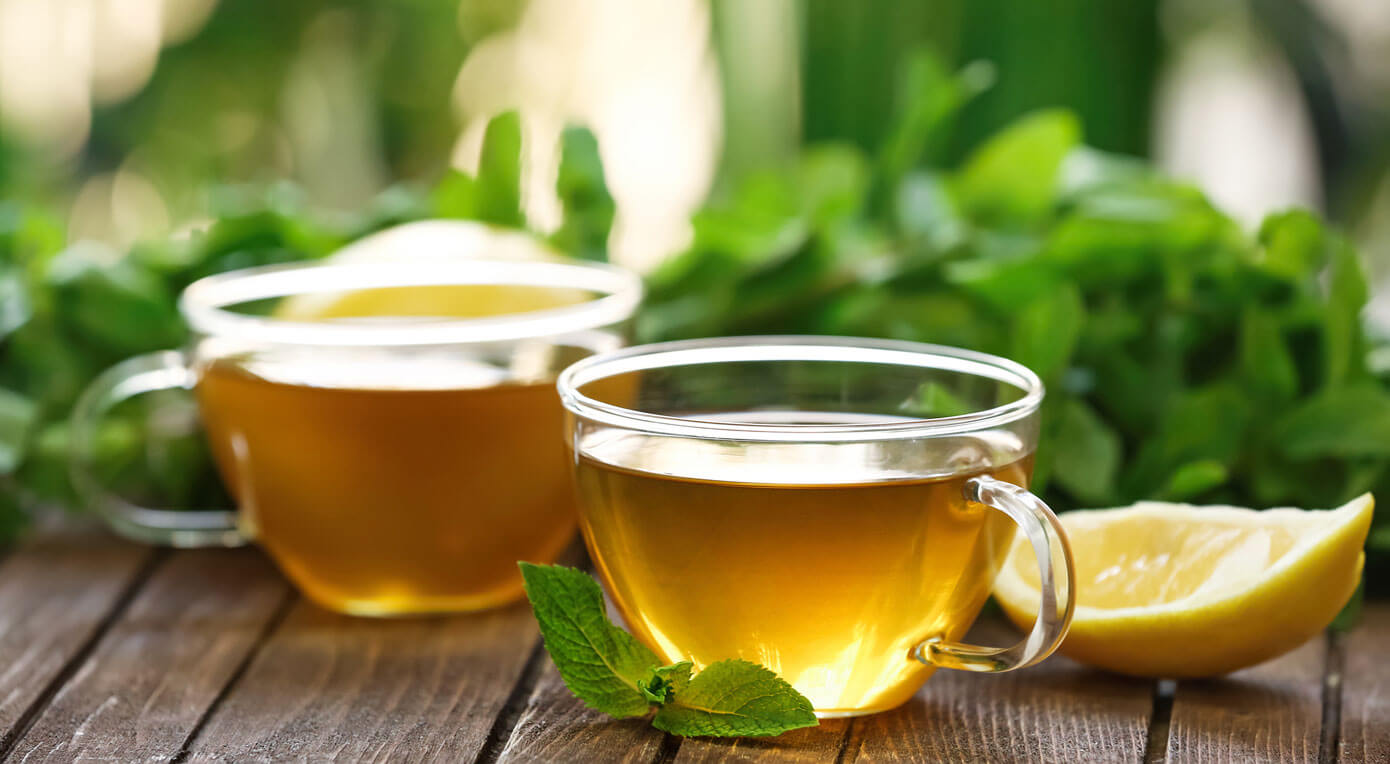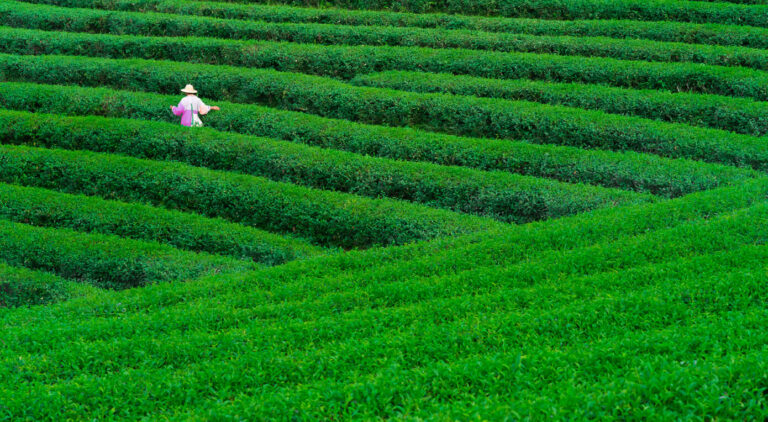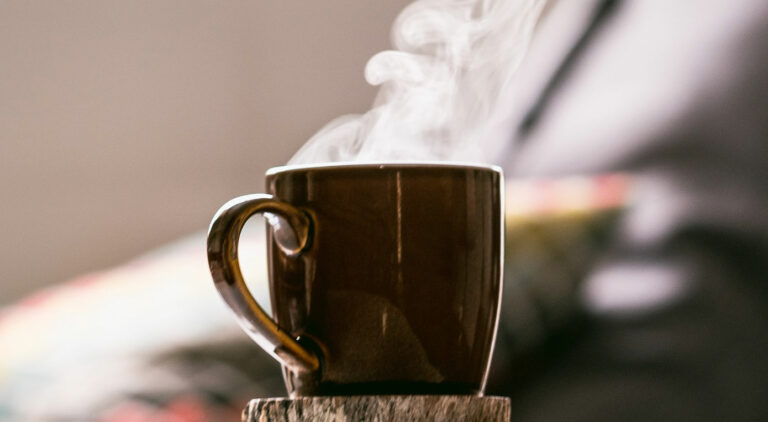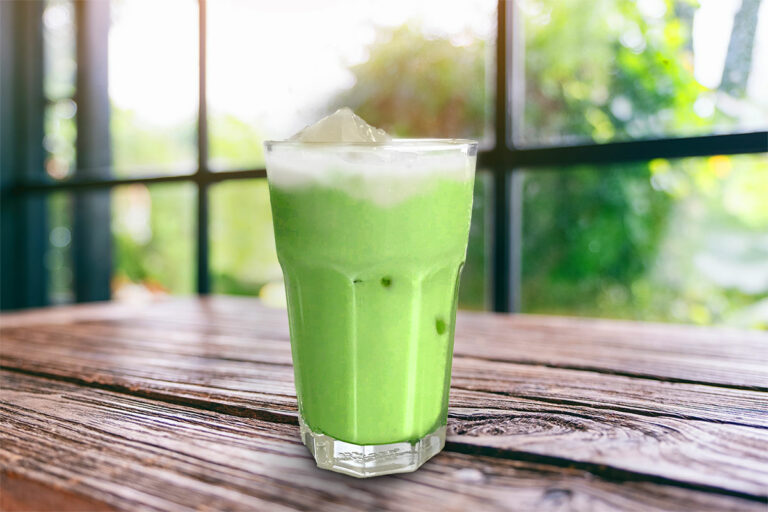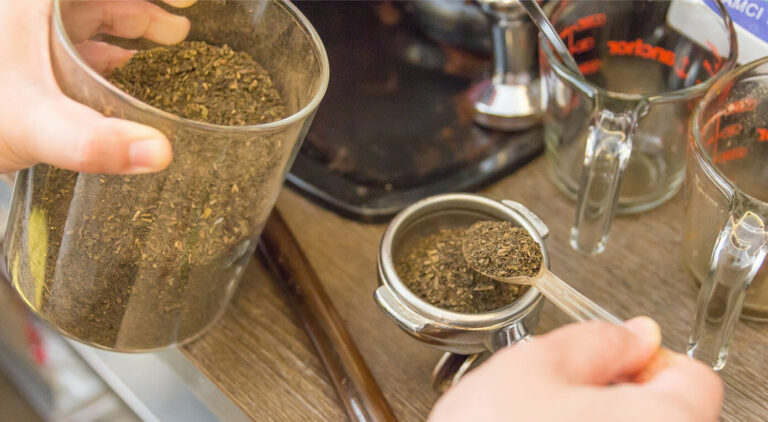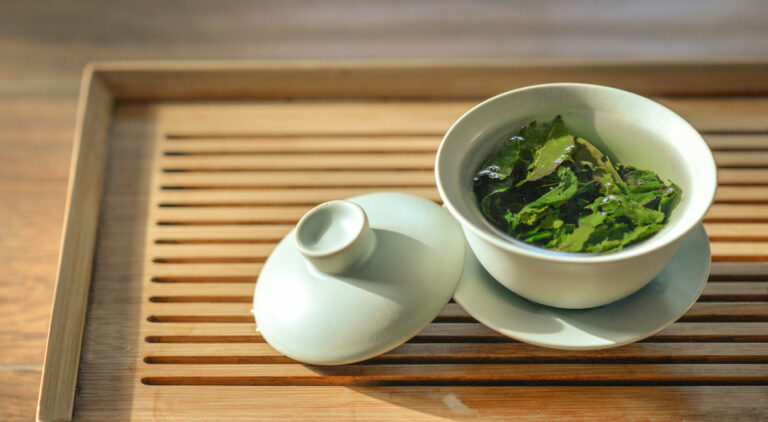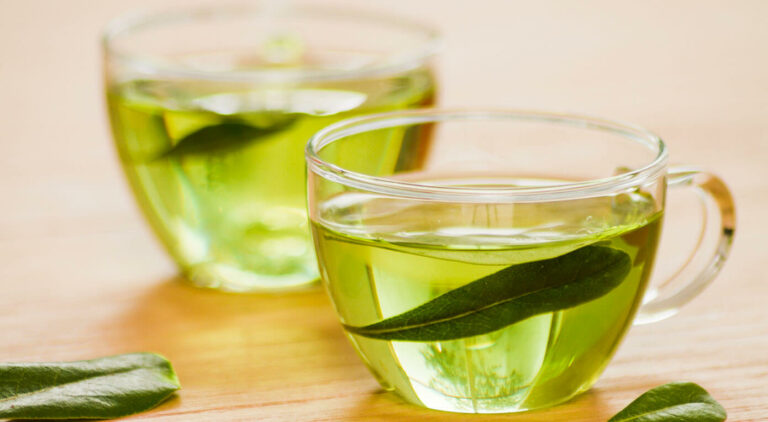Is Green Tea Green in Color? Read Before Drinking
Green tea first started in China, then Japan, and was later cultivated in other parts of Asia and all over the world.
Green tea is made from the leaves of the Camellia sinensis plant, the same family of plants as black tea and is grown in similar conditions. The leaves from the Camellia sinensis plant are harvested, processed, dried, and then made into tea.
Read on to find out, if green tea is green in color, what are the colors of green tea, and how to brew it.
Is Green Tea Green in Color?
Green tea is known for its antioxidant properties and its ability to help with a variety of health problems. It is easy to see why. If you’ve had green tea of different brands and types, then you’ve probably noticed that it can appear in different colors, not necessarily green. Some can be pale green color, bright green color, yellow color, yellowish-green color, or even a darker color like light brown.
Before you think your green tea has expired or turned bad, consider other factors first. The different colors of green tea and all teas, in general, are indicators of the type of tea, where it was grown, and how they are processed. The colors may also tell you how good the tea quality is.
Why Some Green Tea is Green Color and Some Not?
In general, the color of green tea comes from the natural color of the leaves of the tea plant. Leaves have chlorophyll, which is a chemical found in the leaves of plants that is responsible for their green color.[1]https://ift.onlinelibrary.wiley.com/doi/abs/10.1111/j.1365-2621.2004.tb09894.x Chlorophyll is what gives the plant its green color. When the leaves are plucked from the tea plant, they immediately wilt and will go through a process where oxygen in the air causes the leaves to start turning brown, known as enzymatic oxidation.
The oxidation process is what gives the tea its final color as the chlorophyll is broken down and separated from the tea leaves. The longer the leaves are left to wither, the more oxidation it goes through, and the darker they become. In the extreme case, that’s where you get oolong tea and black tea where the color ranges from red to dark brown color.
For light oolong teas this may be anywhere from 5–40% oxidation, in darker oolong teas 60–70%, and in black teas 100% oxidation. Oxidation is highly important in the formation of many tastes and aroma compounds, which give tea its liquor color, strength, and briskness.[2]https://en.wikipedia.org/wiki/Tea_processing#General
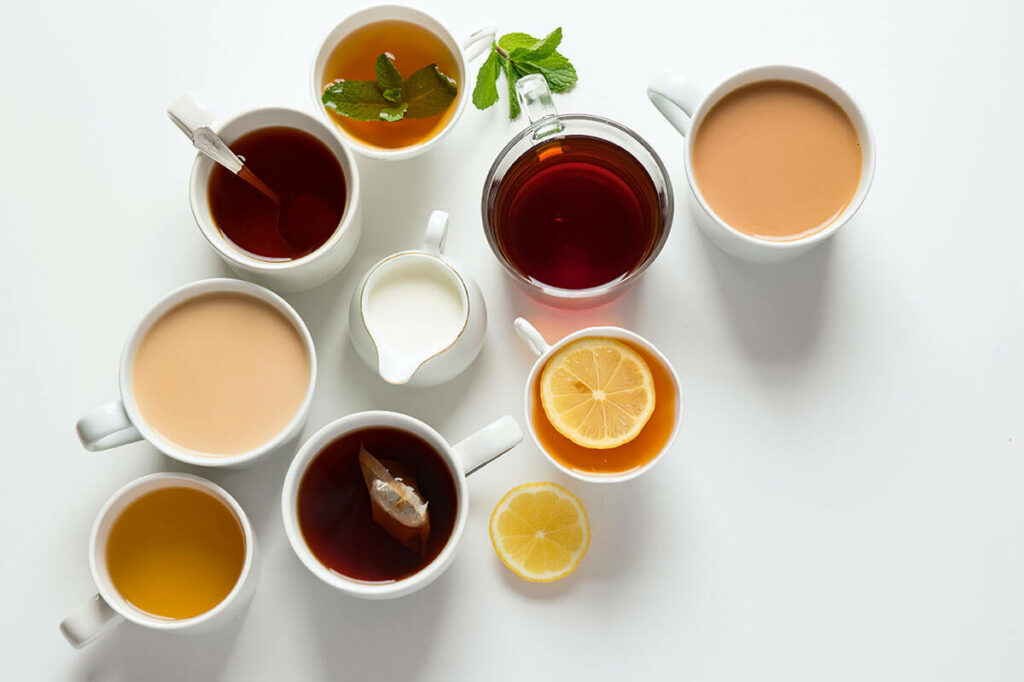
As for the green teas that are green in color, other than the natural wilting process after the leaves are plucked from the tea plant, they do not undergo any other external oxidation process. If you were to drink green tea that’s green, you are supposedly drinking very close to the natural form of tea straight from the plant. Green tea is made from one of the least fermentation and process intervention among all teas, after white tea. Hence, green tea leaves are able to preserve most of their antioxidants, and flavor, and are lighter green in color than other teas.
Some of the most well-researched benefits of green tea come from the distinctive compounds called catechins. Catechins are the second most abundant group of antioxidants in green tea. They account for 90-95% of the total antioxidants found in green tea, and they are responsible for giving green tea its characteristic color and taste.
Why is my green tea brown?
Besides the oxidation process producing different teas, there are other processes that lead to green teas of different varieties and colors, such as different shades of green, yellow and brown. For example, Hojicha is a type of green tea but it’s brown in color. That’s because the tea is roasted at a high temperature, changing the leaf color tints from green to reddish-brown.
During this high-temperature roasting process, the tea loses catechin. Hence, when you brew Hojicha, your tea is not green in color like other Japanese teas where the leaves have gone through a steaming process.[3]https://en.wikipedia.org/wiki/Hōjicha
Types of Green Tea and Their Colors
You can produce different types of green tea like Japanese green tea or Chinese green tea by using a variety of ways to grow the tea plant and process the leaves. Different types of green tea will give different colors and tastes. This is due to all or any of the following factors:[4]https://www.teatulia.com/tea-101/what-is-green-tea.htm
- Processing methods
- Cultivation practices
- When are the tea leaves plucked?
- How is the tea plant pruned?
- What part of the plant is pruned?
- Are the plants organically grown or are chemicals added?
- What kind of heat is applied to the tea leaves to stop oxidation?
- How are the tea leaves shaped, rolled, and dried?
- Are the leaves left whole or cut into smaller pieces?
- Is the tea grown in cool or hot and tropical places?
- Are the tea plants grown near areas that affect their color and tastes?
Here are some of the common green teas and their corresponding colors when brewed:
Common Japanese green teas and colors
- Hojicha tea – Bright, transparent brown
- Matcha tea – Vivid green
- Gyokuro tea – Pale, transparent yellow
- Sencha tea – Transparent yellow to light yellow-green
Common Chinese green teas and colors
- Gunpowder tea – Yellow
- Dragonwell tea or Longjing tea – Yellow-green
Colors and Quality of Green Tea
What color shows a top-grade green tea? This depends on the type of green tea because there are many variations due to different methods of processing it, and different preparation methods. Hence there are different quality markers used for different types of green tea.
Since Dragonwell or Longjing green tea is one of the most common Chinese teas and renowned for its high quality, we shall use it as a standard example. Also, Longjing tea has been through a more minimal oxidation process than most green teas.
A study has been done by Wang and Ruan (2009) found that if Longjing tea is of bluish to darker green in color, it is considered a lower quality green tea. In other words, a higher concentration of chlorophyll means deeper green, and in turn, concludes the tea is not of top grade. The study also showed that higher concentrations of free amino acid and theanine in Longjing tea lead to what is perceived as a good taste.[5]https://ifst.onlinelibrary.wiley.com/doi/pdf/10.1111/j.1365-2621.2009.02040.x
Based on this fact, if you want to be drinking high-quality, top-grade Dragonwell or Longjing green tea, look out for one with tender, whole leaves that are uniform in appearance. When brewed, these leaves will produce a bright and clear yellow-green-colored tea.
Health benefits of green tea
Green tea contains many different vitamins, minerals, and amino acids. Green tea’s health benefits are due to its vitamin C content, its antioxidants, and its ability to increase metabolism. Green tea has many vitamins and minerals. Vitamin A and C are found in green tea at high levels. Vitamin A is responsible for healthy skin and immune system function, while C is responsible for metabolism, preventing infections, and preventing certain types of cancer. Green tea is also an excellent source of amino acids, including the amino acids L-Tyrosine, L-Theanine, and L-Theanine.
The Effect of Green Tea on the Body
It is important to note that green tea has been used to treat many conditions for centuries. It is possible that the green in green tea is not due to its color, but rather the processing used to make the tea. Without the processing of being exposed to the air, green tea would be an unprocessed green tea, with no health benefits. Oxidized green tea is made from unprocessed green tea, meaning that it has lost its health benefits.
Is Green Tea Good for You?
People usually drink green tea for its health benefits, but it is important to note that unprocessed green tea is the best option. Unprocessed green tea contains the highest amount of antioxidants, while oxidized green tea is the lowest. If you want to go for high-quality green tea, choose the best loose leaf green tea like sencha or gyokuro.
Green tea contains a lot of vitamins and minerals. Vitamin A, C, and amino acids are all important for good health. Even though green tea loses some of its antioxidants when it is exposed to oxygen, it is still one of the most antioxidant-rich teas out there.
How to Brew Green Tea
There are a lot of different reasons people drink green tea. The quality of the tea you drink will depend on the type of tea you drink and your brewing process. Raw green tea can be consumed without any processing. Alternatively, tea bags that are green in color are most likely raw green tea. If you are more interested in the health benefits of green tea, you can try using loose leaf green tea.
Here’s one way to brew a refreshing cup of green tea.
Ingredients and Equipment:
- Teapot and teacup
- 3 teaspoons loose leaf green tea
- Hot water but not boiling water
- Tea strainer
- Honey
Instructions:
Step 1: Preheat your teapot and teacups
Pour hot water into your teapot and teacups, then swirl them so that the hot water touches all sides. Then discard water.
Step 2: Prepare tea
Add three teaspoons of loose sencha green tea into a tea strainer.
Step 3: Prepare hot water for tea
Boil about 9 ounces or 250ml of water. Then let it cool to about 180 degrees Fahrenheit and pour it into the teapot. Do not use boiling water to preserve the green tea’s full flavor profile. Boiling water will burn the leaves causing the tea to have a bitter taste.
Step 4: Steep
Add the tea strainer of green tea leaves into the teapot. Cover the teapot to lock in the green tea flavors. Then leave your tea to steep for about 30 seconds to 3 minutes. The longer you leave it to steep, the more bitter it will become. Remove the strainer anytime after 30 seconds based on your flavor preferences.
Step 5: Add flavor
The sencha green tea already tastes great as it is. But you may wish to add a teaspoon of honey to sweeten and enhance the flavor.
Conclusion: Not All Green Tea is Green
Green tea is a very popular beverage worldwide. It’s often referred to as “the health elixir,” and for good reason. Whether you drink it in its unprocessed, raw form or in a blended beverage, green tea can help you stay healthy. The green in green tea doesn’t refer to the color of the tea, but rather to the processing used to make it. Once the leaves are harvested, they are never exposed to air, so they remain green, unprocessed, and full of antioxidants.
The color of green tea can be green, but it can also be yellow or light brown in color.
References
